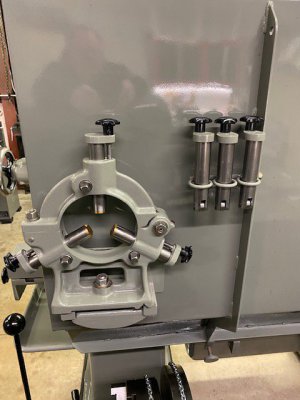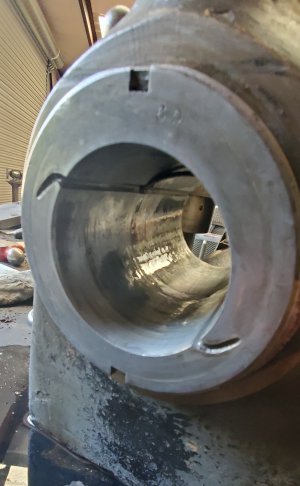- Joined
- Sep 28, 2022
- Messages
- 145
The three materials I’ve seen used on steady rests and follow rests are bronze, cast iron and ball bearings. The thing you have to remember is when two metals are sliding against each other, one is usually thought of as the sacrificial piece. In a steady rest, you’d prefer that any wear take place on the tips rather than the part. I mostly like to use bronze as it seems to give smooth results with a little more accuracy.
I do usually keep one of my lathes with a set of roller bearings. Sometimes there are situations where these are necessary. I usually make a posterboard collar to keep any stray chips out of the bearings. It just takes one to foul things up. In my shop my Pratt & Whitney 12c has two sets of fingers, one bronze and one roller. This makes for quicker changes when needed.

I do usually keep one of my lathes with a set of roller bearings. Sometimes there are situations where these are necessary. I usually make a posterboard collar to keep any stray chips out of the bearings. It just takes one to foul things up. In my shop my Pratt & Whitney 12c has two sets of fingers, one bronze and one roller. This makes for quicker changes when needed.



